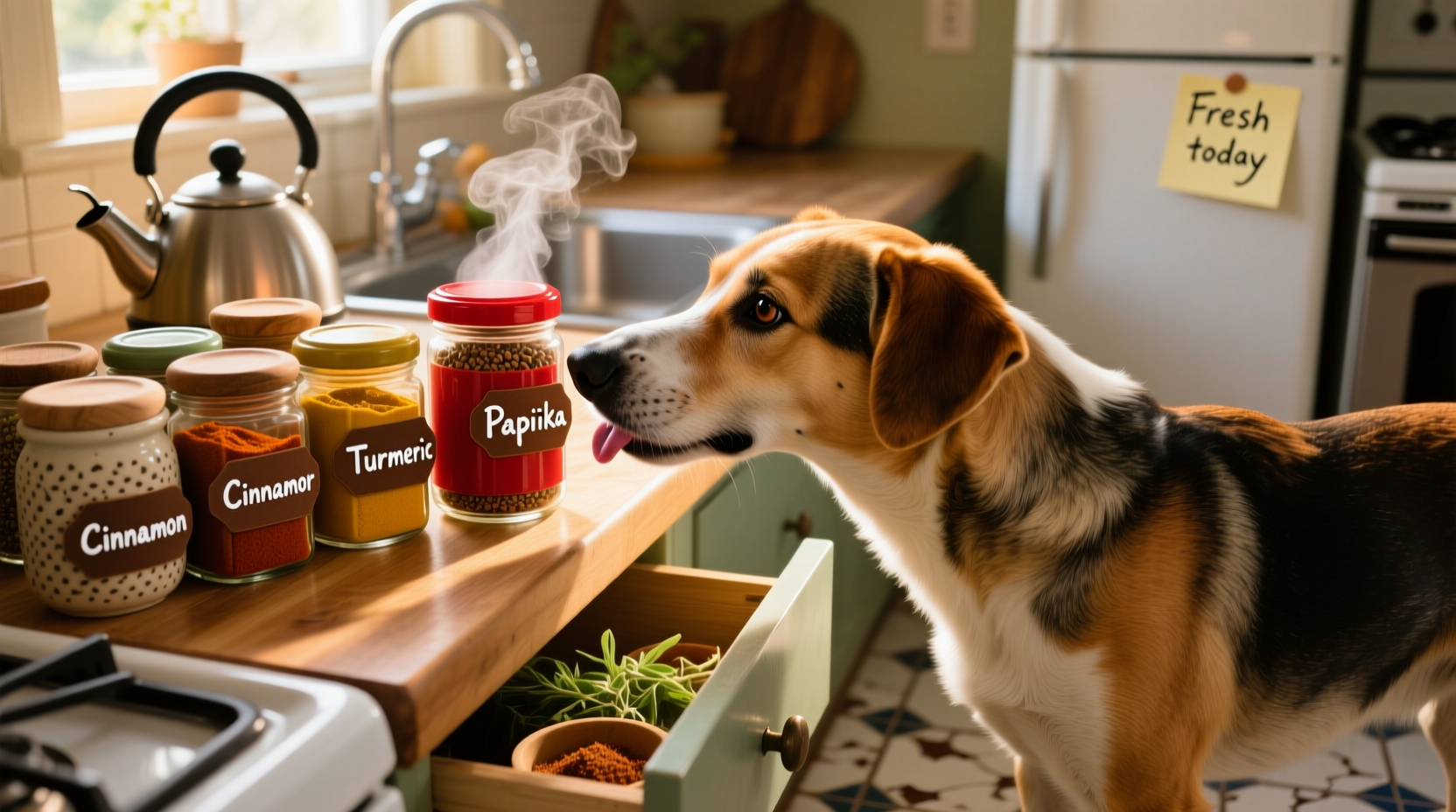When it comes to enhancing your dog's meals with natural ingredients, knowing which spices are safe is crucial for their health and wellbeing. Many pet owners seek natural ways to improve their dog's diet, but not all human-friendly spices are appropriate for canine consumption. Understanding the difference between beneficial and harmful spices can prevent serious health issues while potentially providing your dog with anti-inflammatory benefits, digestive support, and other health advantages.
The Science Behind Spice Safety for Dogs
Dogs process food differently than humans, making some spices problematic despite their benefits for people. According to the American Kennel Club's Canine Health Foundation, dogs lack certain digestive enzymes that humans possess, which affects how they metabolize various compounds found in spices. This biological difference explains why seemingly harmless kitchen ingredients can cause serious issues for our canine companions.
Veterinary researchers at Cornell University's College of Veterinary Medicine have documented how certain spice compounds interact with dogs' red blood cells and digestive systems. Their studies show that while some spices contain beneficial antioxidants and anti-inflammatory properties, others contain compounds that can damage canine physiology even in small amounts.
Comprehensive Guide to Safe Spices for Dogs
When used appropriately, certain spices can offer health benefits for dogs. However, proper dosage and preparation are essential. The following table outlines commonly used spices and their safety profiles for canine consumption:
| Spice | Safety Rating | Safe Amount (per 20 lbs) | Key Benefits | Precautions |
|---|---|---|---|---|
| Turmeric | Generally Safe | 1/4 tsp daily | Anti-inflammatory, joint support | Mix with black pepper and healthy fat for absorption |
| Ginger | Generally Safe | 1/4 tsp daily | Digestive aid, nausea relief | Avoid in dogs with bleeding disorders |
| Cinnamon | Generally Safe | 1/8 tsp daily | Antioxidant, blood sugar regulation | Use Ceylon variety; avoid Cassia |
| Parsley | Generally Safe | 1 tsp fresh | Freshens breath, kidney support | Avoid in pregnant dogs |
| Garlic | TOXIC | None | N/A | Causes hemolytic anemia |
| Nutmeg | TOXIC | None | N/A | Neurotoxic in small amounts |
Understanding Context Boundaries for Spice Usage
Safe spice usage depends on multiple factors beyond just the spice itself. The American Veterinary Medical Association emphasizes that appropriate dosage varies significantly based on your dog's size, age, and health conditions. What might be beneficial for a large, healthy adult dog could be harmful to a small puppy or a dog with pre-existing health conditions.
For example, turmeric shows promising anti-inflammatory properties for dogs with arthritis, but the Merck Veterinary Manual cautions that excessive amounts can cause gastrointestinal upset. The safe dosage threshold differs substantially between a 10-pound Chihuahua and a 100-pound Labrador. Always start with the smallest possible amount and monitor your dog for any adverse reactions over 24-48 hours before increasing the dosage.

Evolving Understanding of Spice Safety
Our knowledge about which spices are safe for dogs has evolved significantly over the past two decades. Veterinary research published in the Journal of Animal Physiology and Animal Nutrition shows that early assumptions about spice safety were often based on limited evidence. For instance, while garlic was once thought to be beneficial for dogs in small amounts as a natural flea repellent, multiple studies since 2010 have confirmed its toxicity even in minimal doses.
The shift in understanding came after veterinary toxicologists at the ASPCA Animal Poison Control Center documented numerous cases of garlic-induced hemolytic anemia in dogs. Their research, updated regularly on the ASPCA Animal Poison Control website, now clearly identifies garlic and all members of the Allium family as dangerous for canine consumption.
Practical Guidelines for Introducing Spices Safely
When incorporating safe spices into your dog's diet, follow these evidence-based guidelines from veterinary nutrition specialists:
- Start with minimal amounts - Begin with 1/8 the recommended dosage and monitor for 48 hours
- Combine with healthy fats - Many spices like turmeric require fat for proper absorption
- Mix thoroughly - Ensure even distribution to prevent concentrated ingestion
- Monitor for reactions - Watch for vomiting, diarrhea, or unusual lethargy
- Consult your veterinarian - Especially important for dogs with existing health conditions
Remember that spices should never replace proper veterinary care. While certain spices may offer complementary benefits, they're not substitutes for prescribed medications or professional treatment. The UC Davis School of Veterinary Medicine cautions that using spices as primary treatment for medical conditions can delay necessary veterinary intervention.
Common Misconceptions About Spices and Dogs
Many pet owners operate under incorrect assumptions about spice safety for dogs. A survey conducted by the American Kennel Club found that 62% of dog owners believe garlic is safe in small amounts, despite clear veterinary evidence to the contrary. Another common misconception is that "natural" automatically means "safe," which isn't true when it comes to canine nutrition.
Veterinary toxicologists emphasize that many natural substances that are beneficial for humans can be harmful to dogs due to physiological differences. Always verify spice safety through reputable veterinary sources rather than anecdotal information from social media or non-professional websites.
Final Recommendations for Responsible Spice Use
When used responsibly and with proper veterinary guidance, certain spices can complement your dog's diet and potentially provide health benefits. However, the margin between beneficial and harmful amounts is often narrow. Always prioritize your dog's safety by:
- Consulting your veterinarian before introducing new spices
- Starting with minimal amounts and monitoring for reactions
- Using only pure, additive-free spices without harmful fillers
- Keeping emergency veterinary contact information readily available
Remember that your dog's regular balanced diet should provide all essential nutrients. Spices should be considered occasional supplements rather than dietary staples. When in doubt about a particular spice's safety, the safest approach is to avoid it until you've consulted with a veterinary professional.











 浙公网安备
33010002000092号
浙公网安备
33010002000092号 浙B2-20120091-4
浙B2-20120091-4